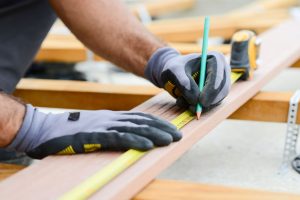Contamination, structural damage, and asbestos in materials are among the hazards facing restoration contractors during massive flood cleanup.

Photo credit: istock.com/Jean-philippe WALLET
Restoration companies are in high demand in southern B.C., after atmospheric rivers caused flooding that damaged numerous homes and buildings. I read this CBC News story about potential hazards for workers who are helping with restoration.
In the article, Barry Nakahara, a senior manager in Prevention Field Services at WorkSafeBC, says that risks vary, depending on damage, but potential hazards could include:
- Asbestos
- Chemical or biological contamination
- Structural or electrical damage
- Animal carcasses
He reminds us that employers have an obligation to ensure healthy and safe workplaces, and says they need to ask themselves “what risks are out there and what are the hazards that my workers are going to be exposed to as I proceed with this work?”
A recent WorkSafeBC news release also relays the importance of identifying potential hazards during post-flood recovery. Employers will need to conduct a risk assessment of their workplace to determine the best way to control each risk. (The news release is also available in Punjabi, Simplified Chinese, and Traditional Chinese.)
Additional resources for the restoration industry
Kathy Tull, an Occupational Health and Safety consultant with WorkSafeBC, praises the work of the BC Construction Safety Alliance’s (BCCSA) Fire and Flood Restoration Program’s Technical Advisory Committee. About 140 fire and flood restoration companies in the province are represented and supported by the members of this committee. The committee develops safety training and resources, which are especially valuable for smaller restoration contractors who don’t necessarily have access to the same health and safety resources as larger companies.
“The beauty of this committee is that all members bring their safety-related materials to the table and willingly share everything,” says Kathy, WorkSafeBC’s representative on the committee. “Their shared materials are used to develop a variety of industry best practice documents that make a difference in worker safety for all fire and flood restoration employers. The best of the best is pulled together for all to use.”
I also spoke with Kathy in my post about the video Donning and Doffing PPE in the Restoration Industry. In discussing full-body personal protective equipment with me, Kathy said: “Protecting yourself can be achieved easily, if you know how.” She talked about identifying the hazards, assessing the risk, then knowing what the right equipment is, and how to use it through proper training and supervision. She said, “The next step is to practice doing it right before you need to use it.”
Which other industries should we recognize for their work in flood recovery? Let me know in the comments below.


